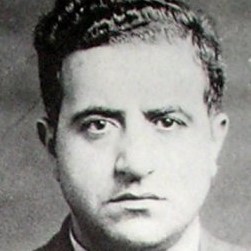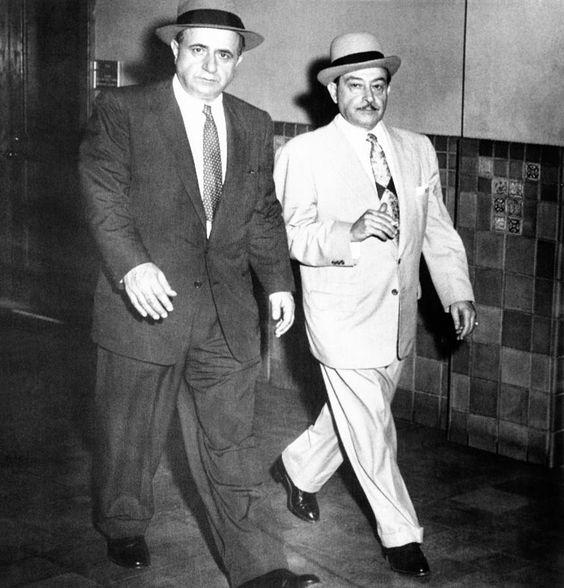
1902 - 1957
Umberto Anastasia
Summary
Name:
Nickname:
Albert / The Earthquake / The One‑Man Army / Mad Hatter / Lord High ExecutionerYears Active:
1921 - 1957Birth:
September 26, 1902Status:
DeceasedClass:
MurdererVictims:
12+Method:
Shooting / Stabbing / BludgeoningDeath:
October 25, 1957Nationality:
USA
1902 - 1957
Umberto Anastasia
Summary: Murderer
Name:
Umberto AnastasiaNickname:
Albert / The Earthquake / The One‑Man Army / Mad Hatter / Lord High ExecutionerStatus:
DeceasedVictims:
12+Method:
Shooting / Stabbing / BludgeoningNationality:
USABirth:
September 26, 1902Death:
October 25, 1957Years Active:
1921 - 1957Date Convicted:
March 17, 1921bio
Umberto Anastasio—later known as Albert Anastasia—was born on September 26, 1902, in Calabria, Italy, to Bartolomeo Anastasio, a railway worker, and Marianna Polistena. Orphaned of his father's guiding hand after World War I, young Anastasio grew up with eight siblings, including brothers Anthony, Joseph, Gerardo, Raffaele, Frank, Luigi, Salvatore, and sister Maria.
By 1919, Albert and several of his brothers deserted a freighter en route to the United States, landing in New York City. They quickly became longshoremen on the gritty Brooklyn waterfront—an environment that offered both livelihood and a whisper of power in unionized labor.
In 1921, a violent quarrel with a fellow dockworker, George Turino, ended in murder. Anastasia was tried and convicted, sentenced to death, and imprisoned at Sing Sing—but a technicality, alongside the disappearance of key witnesses, resulted in a retrial and his miraculous release in 1922. Shortly thereafter, he formally changed his surname from Anastasio to Anastasia—perhaps to rebirth himself as an unruly force.
He remained entrenched in both union politics and criminal enterprise. In 1923, Anastasia was convicted of illegal firearm possession and served two years in prison. By the late 1920s and early 1930s, reports of further homicide charges in Brooklyn never reached court, as witnesses vanished—underscoring his early influence and ability to intimidate.
murder story
During the bloody Castellammarese War of 1931, Anastasia played a pivotal role in the assassination of Masseria on April 15. While Luciano excused himself during a card game, Anastasia and others executed Masseria, facilitating Luciano’s rise to power.
Anastasia's lethal efficiency earned him leadership of Murder, Inc., the National Crime Syndicate’s enforcement arm. This clandestine group is estimated to have executed thousands of contract killings. He earned the chilling epithets “Mad Hatter” and “Lord High Executioner.”
In 1939, he allegedly ordered the deaths of union activist Peter Panto and Teamsters official Morris Diamond, eliminating threats to his control of waterfront labor. The early 1940s saw his power peak—but cracks appeared. Abe Reles, a key informant, died suspiciously while under protection in 1941. The next year, Anthony Romeo, another suspect in Panto’s murder, was found beaten and shot. These events, many believe, were orchestrated by Anastasia to silence loose ends.
Meanwhile, during WWII, Anastasia joined the U.S. Army and rose to technical sergeant. His role in securing a pardon for Luciano in exchange for Mafia cooperation with war efforts revealed his political savvy. He also obtained U.S. citizenship in 1943 before being honorably discharged in 1944.
In 1951, the disappearance of Vincent Mangano and his brother marked a pivotal shift—Anastasia, long the underboss, assumed full leadership of the renamed Anastasia (later Gambino) crime family. His power was absolute—yet his notoriety, and instability, made him enemies.
One of the more infamous alleged hits was the March 8, 1952, murder of Arnold Schuster—a civilian who identified bank robber Willie Sutton. Reportedly, Anastasia saw Schuster’s televised interview and snapped: “I can’t stand squealers! Hit that guy!”
By mid‑1950s, internal tensions rose. He was convicted of tax evasion in 1955 (pleading guilty May 23) and sentenced to a year in prison. Although authorities sought to strip his citizenship, a higher court ruled in his favor.

Finally, on October 25, 1957, as he sat in a barber’s chair at the Park Sheraton Hotel, assassins—on orders from Vito Genovese and Carlo Gambino—burst in and gunned him down.